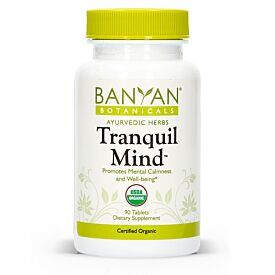An Ayurvedic Perspective on Anger Management
Emotions are a natural part of our physical existence. Everyone expresses emotions differently. We are unique individuals with multitudes of factors determining how and why we behave the way we do. When emotions are expressed in a destructive manner, it is easy to label them as negative or a hindrance to our growth. Anger, for example, when left untamed can seem like a raw, ravenous wildfire burning up everything in its path. However, understanding emotion as simply energy that can be channeled through the body can support more creative and healthy expression.
The ancient tradition of Ayurveda offers the tools of yoga, pranayama, and meditation to bring equanimity and peace to the mind. From this place of calm one can choose positive expression of even the most lethal of emotions.
Anger is an emotion particularly associated with pitta dosha. It possesses the hot, sharp, and light qualities of fire, one of the elements that govern pitta. Anger has many closely related emotions such as impatience, judgment, and criticism. This emotion manifests differently for each individual varying in intensity and duration of experience. Some people raise their voices, break or throw things, drink or use drugs. Others find physical exertion helpful and are able to release emotions through lifting weights, kickboxing, running or swimming. Some people get red in the face looking as though smoke may start to stream from their ears as they explode. Others suppress their anger and hold it inside.

Trapping this powerful energy in the body is counter-productive to health and is probably the most destructive method of handling anger both for the individual and their environment. Repressed emotion may cause physiological disruptions in the body and promote untimely explosive reactions.
Whatever your personal expression of anger may be, do not judge it. There is no right or wrong way to express emotion. Instead, bringing mindfulness to your expression allows you to measure its destructive or creative capability. Be a witness to yourself as you throw a pillow across the room. Is that the best way to release that energy? How is it benefiting you? Is it benefiting those around you? If you feel yourself with clenched fists and jaw like a hothead, visualizing the steam blowing out of your ears and nose can be humorous and may help release the anger.
Transforming the energy of anger into joy takes tremendous skill but is an invaluable therapeutic resource. Simply bringing awareness to the action of expression through observation encourages dissipation of anger making it easier to manage. Witnessing not only creates a space to accept your present reality, but also gives you the option to make a change.
Yoga, whether practiced for physical fitness, maintaining health, or spiritual reasons, is a transformational tool. Restorative postures, coupled with full yogic breathing, are most effective for releasing blockages in the body and allowing emotions to flow freely. When blockages are removed on the physical level, shifts occur in the associated areas of the psyche. Beginning your practice with Savasana, or corpse pose, can help you develop your ability to feel or sense your body. Again, bring awareness to the body through observation. Notice any tension without judging. Here you can ask questions about the tension or pain. For example, who or what is that tension living in your hip? Is it benefiting you in some way? Is there a particular emotion attached to it?
This softness and flexibility are balanced qualities of pitta dosha. Regular practice cleanses the body and brings clarity to the mind, supporting our ability to stay afloat in the sea of our emotions, enhancing our relationship to the external environment.
Pranayama is a valuable tool in our hectic world not only for its revitalizing effect on the body, but also because of its versatility. It can be practiced while waiting in line at the grocery store or stuck at a red light. When pitta starts to flare, moving prana can help to harness that energy and move it out before it has a chance to wreak havoc.

Deep abdominal breathing is an easy way to dissipate intense feelings and raise the energy in the body. Sheetali is one of the best types of pranayama to practice in the summer and to relieve excess pitta. The method involves rolling the sides of the tongue to form a tube and then sucking air in, filling the lungs completely. Hold the air for a moment or two before exhaling through the nostrils. Practiced anywhere from one to five minutes, this breathing exercise has an instant cooling effect on an overheated hothead. This breath also supports proper liver and spleen function while quenching the thirst.
The benefits of practicing pranayama are endless. Controlling the breath brings more awareness to the body, mind, and senses and restores a calm, cool center. If we are interacting in the world from a clear centered place, we enhance our ability to respond and react positively to all influences of life.
Moderate meditation can be invaluable in establishing equanimity of the mind and releasing anger. There are many chemical responses occurring in our bodies when we experience anger, including the rush of adrenaline during the classic flight-or-fight stress response. In your meditation practice, utilizing the metaphor of riding waves in the ocean can mirror what is happening physiologically in your body. Meditation allows us to peek into our subconscious mind where thoughts and emotions arise in energetic swells. Keeping the mind and heart open and as fluid as the breath allows you to sense the crescendos and ride the crests of emotional waves. Become familiar with how anger moves within your body and mind and soon you will be surfing the tsunamis of anger while maintaining a perfect state of grace.
Meditation gives us the freedom to choose to bring a creative and beautiful expression to all energy we emote into the world. The practices of yoga, pranayama, and meditation ultimately remove the obstacles caused by trapped or confused energy patterns and bring us back in touch with our true nature as divine beings. Remembering that light is one of the qualities of the fiery emotion, anger, can be helpful in transforming some of the sharpness and cutting qualities into pure consciousness. Strengthening our union with the divine allows us to be free-flowing vessels of light.
Please note: Because anger is an emotion associated with pitta dosha, following a pitta-soothing diet and taking pitta-pacifying herbs, such as shatavari or amalaki, can be an effective foundation for anger management.












